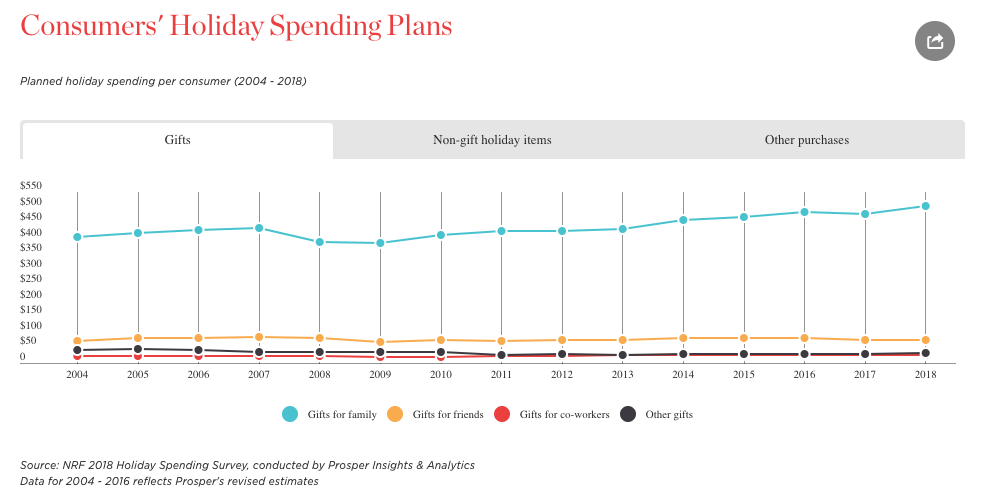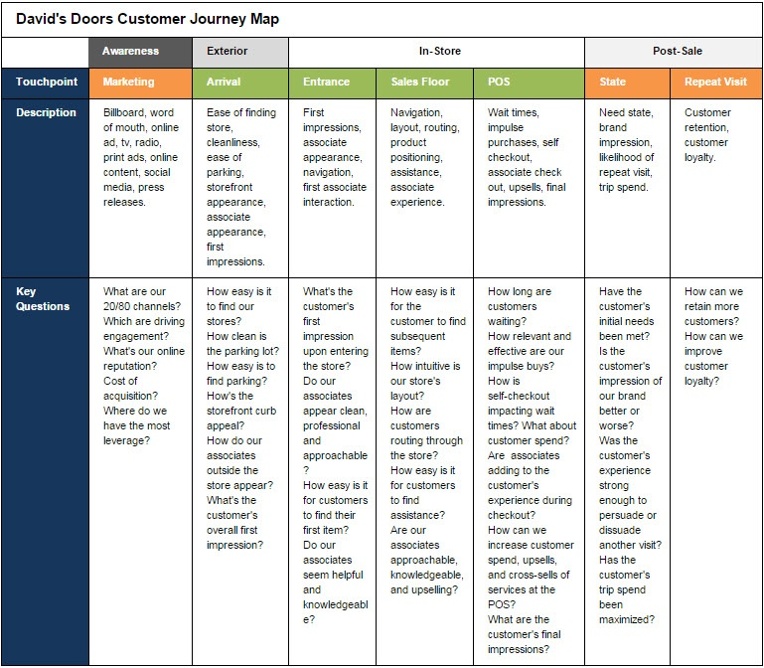We understand the importance of our customers’ thoughts and ideas, but what does your brand do to effectively build a customer journey map?
In today’s hyper-competitive landscape, it’s all about learning from our customer interactions before, during and after the sale. The problem is we often make erroneous assumptions that don’t align with our customer’s reality.
Additionally, it’s easy to fall behind on meeting our constantly growing customer expectations and meeting them with a great and ever-changing customer experience.
Your customer journey map describes your customer’s path from the moment your brand enters their awareness through the in-store experience, purchase and post sale. Creating a customer journey map gives you a high-level overview of all of the touchpoints between brand and customer.
Customer journey maps increasingly appear in omni-channel initiatives to ensure the customer experience is consistent across all channels. Mapping out these journeys are invaluable to marketing and customer experience efforts.
But all too often, brands and retailers attempt to understand customers and don’t learn true and valuable frustrations. It’s easy to make assumptions that don’t align with our customers’ reality.
Instead, we have a lot of data about our customers’ experience, but have no way to put the insights into action.
Addressing the Long-Term Customer Journey Map Solution
Retail is relatively stable over the short-term. Brick and mortar stores and the majority of customers aren’t going to disappear in the next year or two. The National Retail Federation even expects a rise of 4.1% in holiday retail spend compared to the previous year’s 3.5% growth. Over time, it will become apparent which brands and retailers decided to tackle the hard questions.

To understand how we can drive brand innovation through the adoption of up-to-date best practices, let’s investigate the process of modern customer experience design, starting with the customer journey map.
Planning Out the Customer Journey Map
To make this easier, we made up a fictional 500-store business called David’s Doors–a retailer selling commercial and residential doors–to plan our customer journey map. Its typical customers are building owners and contractors and we know they sell doors in stores and BOPIS (buy online, pick-up in store).
This company also sells hardware for doors and door installation services. David’s Doors average daily revenue per store is $5,000 and concerned with stagnating sales, they’ve recently commissioned an internal project team to create a customer experience report.
As part of this report, the project team generated a customer journey map:

The customer journey map details the customer’s experience beginning with their brand awareness, through the purchase process and post-sale. During the discovery process, the project team generated a list of key questions regarding the current customer’s experience.
As a result of these inquiries, the project team generated a list of recommendations for best practices moving forward, based on the project team’s research into innovators within the industry and industry leaders.
Best Practices for Retail Brands
From a marketing and customer experience perspective, the shift occurring for retail is best described as a sliding scale between driving procedural efficiency and driving customer acquisition and retention. In the traditional retail paradigm, marketing and customer experience campaigns are implemented on a region-by-region and store-by-store basis.
Additionally, these campaigns are based on segmented lists and past data. In the new retail paradigm, marketing and customer experience are implemented on a customer-to-customer basis and based on individual customer data.
Modern marketing is agile and testing is done on shorter cycles with immediate feedback. Highly targeted messages are delivered to individual customers based on their personal data history and through their preferred mode of communication.
Modern customer experience delivers highly personalized experiences and gives the customer the power to define their shopping experience. With online retail trying to outpace brick-and-mortar and customers’ increasing expectation to define their personal shopping experience, brick-and-mortar retailers face increasing pressure to elevate their brand equity and become and remain their target market’s preferred retailer.
The challenge large retailers face is how they can implement this data and the data from their customer maps at scale while also planning to meet their customers’ future needs.
To tackle this challenge, your implementation must be tested thoroughly. The best ways to test your implementation are through customer surveys and mystery shopping programs. Together, they deliver the required data needed to identify problems and ensure that you have captured the customer journey map as your customer experiences it.





